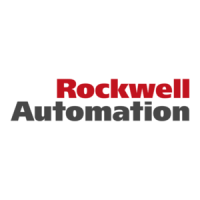
Do you have a question about the Rockwell Automation FactoryTalk Batch and is the answer not in the manual?
| Brand | Rockwell Automation |
|---|---|
| Model | FactoryTalk Batch |
| Category | Power Supply |
| Language | English |
Provides an introduction to the document's purpose and scope.
Explains the structure and presentation order of the document's content.
Contains information on legal aspects, licenses, and terms.
Lists other relevant documentation for further information.
Defines the core concept and purpose of the FactoryTalk Batch software.
Explains the automation approach based on ISA S88.01 standards.
Lists and briefly describes the core software components of the system.
Describes the role, functions, and architecture of the FactoryTalk Batch Server.
Guides on setting up sample demonstration files and configuring security users.
Details server configuration, startup procedures, and operational options.
Checks communication status between system components.
Steps to launch the editor and explore the area model structure.
Defines reusable phase logic (classes) and executable phase instances.
Sets up electronic signatures and integrates them into recipe approval workflows.
Enables security features and manages recipe versioning.
Guides on launching the editor and opening/reviewing recipes.
Understanding SFC, different views, and recipe hierarchy.
Adding, assigning values, commenting, and removing recipe steps.
Implements loops, recipe verification, and step removal.
Launching the application and starting a sample batch for execution.
Examining execution status, navigating SFC, and viewing event logs.
Manual control, handling prompts, arbitration, and resolving phase issues.
Customizing the application's interface and view settings.
Overview of archiver capabilities and its operational workflow.
Procedures for inserting batch record data into the database.
Overview of using ActiveX controls for dynamic batch automation interfaces.
Descriptions of essential controls like ControlRecipeList, PromptsList, SignatureList, ProcedureView, TimerView.
Programming phases outside process-connected devices for efficiency.
Demonstrates a practical application of PC-based phases in a recipe.